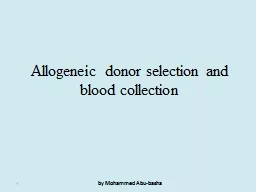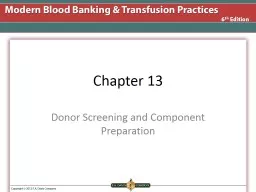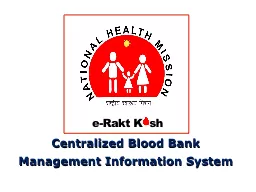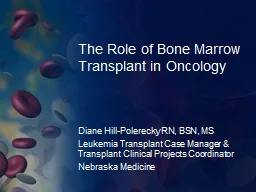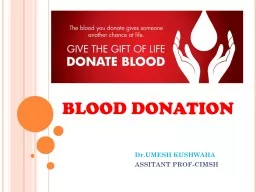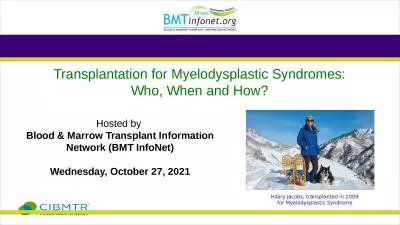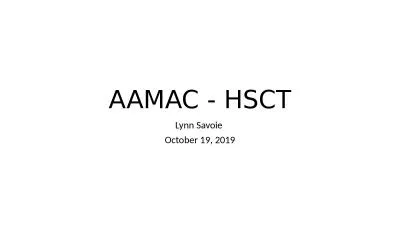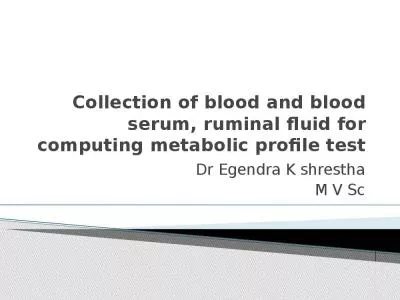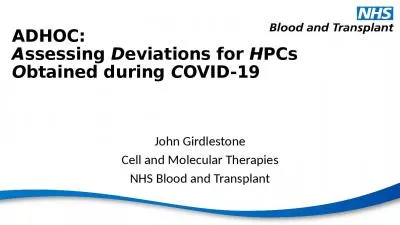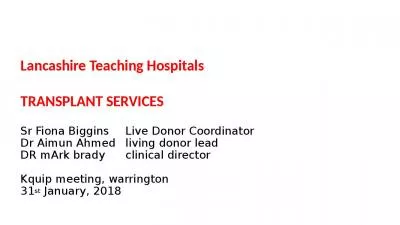PPT-Allogeneic donor selection and blood collection
Author : calandra-battersby | Published Date : 2020-04-02
by Mohammed Abu basha 1 An allogeneic also called homologous donation allo from the Greek meaning other is when a donor gives blood for storage at a
Presentation Embed Code
Download Presentation
Download Presentation The PPT/PDF document " Allogeneic donor selection and blood co..." is the property of its rightful owner. Permission is granted to download and print the materials on this website for personal, non-commercial use only, and to display it on your personal computer provided you do not modify the materials and that you retain all copyright notices contained in the materials. By downloading content from our website, you accept the terms of this agreement.
Allogeneic donor selection and blood collection: Transcript
Download Rules Of Document
" Allogeneic donor selection and blood collection"The content belongs to its owner. You may download and print it for personal use, without modification, and keep all copyright notices. By downloading, you agree to these terms.
Related Documents

